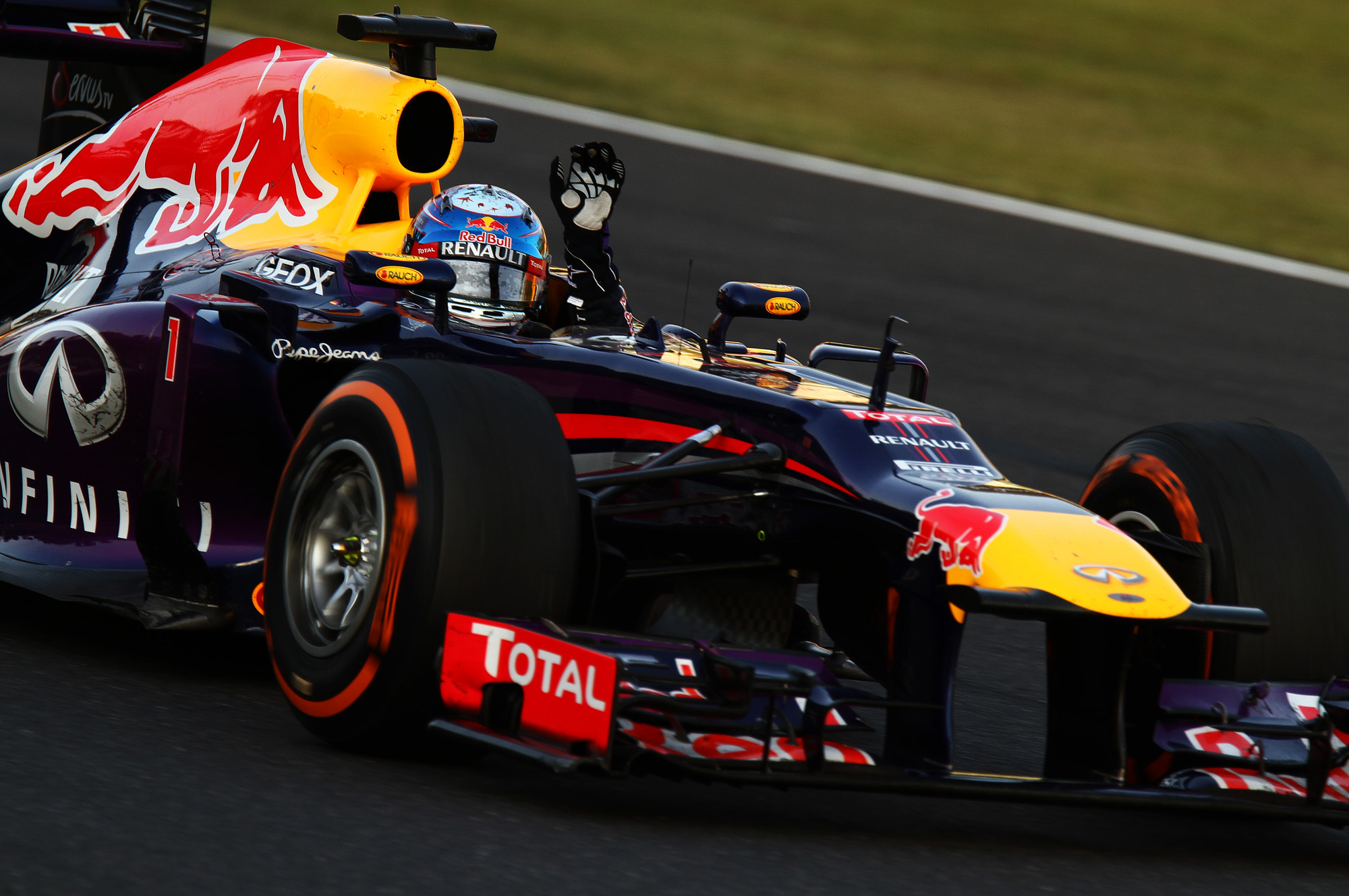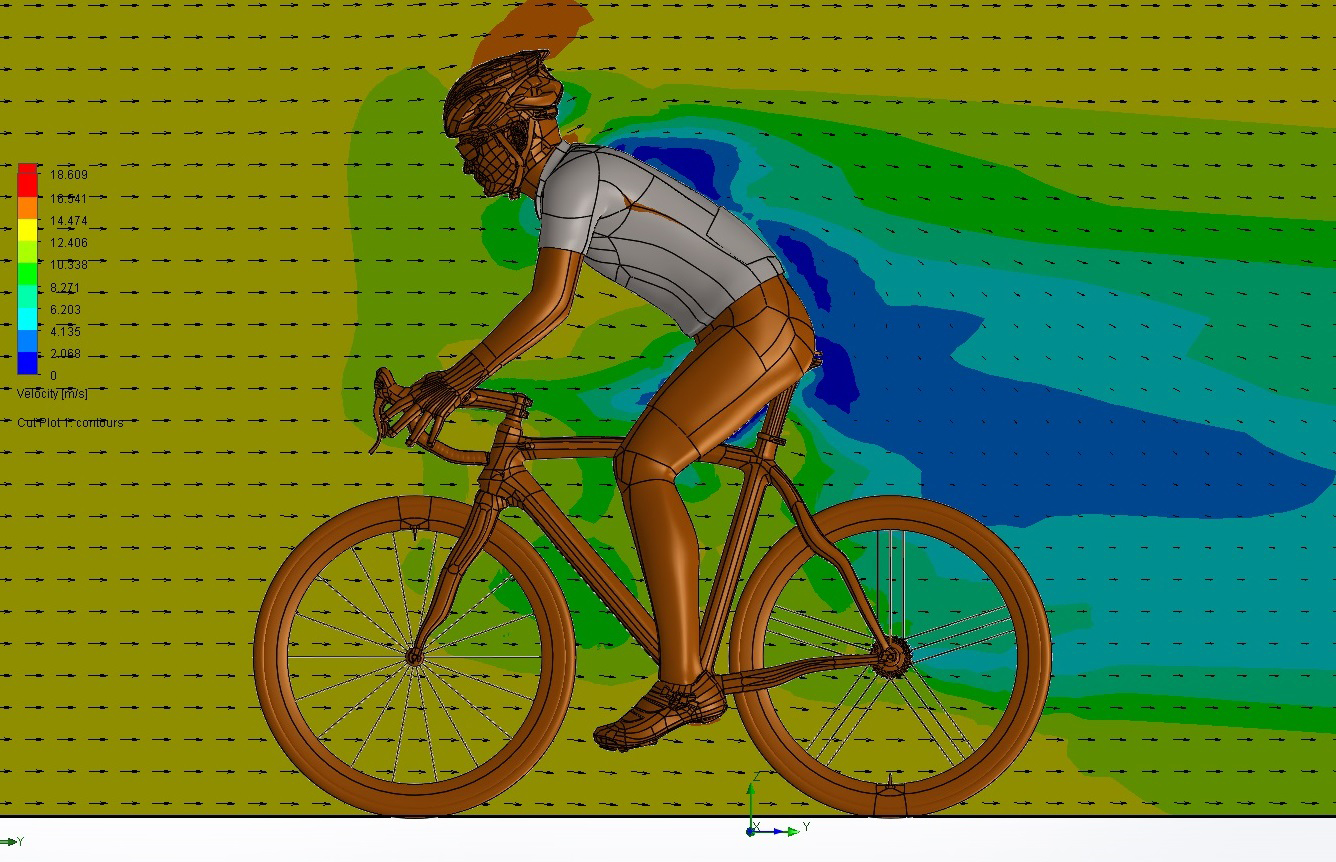Wind Tunnel VS. CFD
Wind Tunnel
Our favorite metaphor for the wind tunnel is an athlete monitoring body weight reduction in training. On day one the athlete steps on the scale and it registers 168 pounds. Seven weeks later they weigh in again and the result is 152 pounds. Ok, where was the weight reduction? Was it arms, legs, torso? Did they lose power, gain efficiency?
There you have it; the wind tunnel literally weighs you in the wind flow. The real question now becomes: where the drag is occurring and, more importantly, why?
Repeatability is crucial for establishing a baseline performance. Athletes pedaling in the tunnel are human, they become fatigued, they twitch on the bike and when trying to determine if a new piece of equipment is going to reduce an athlete’s drag by 50 grams, the introduction of a high amount of “noise” into the balance [force sensors] will not yield acute results. Wind tunnel repeatability quickly becomes challenging and unreliable. The Falcon Pursuit staff has extensive cycling specific wind tunnel time and has seen the benefits and limitations of old school wind tunnel bike fitting protocols.
Another challenge facing wind tunnels is logistics. Wind tunnels are stationary; therefore, in order for the athlete to be tested, they - along with any equipment - are required to physically travel to a specific location. Let’s look at an example: Your sponsor releases a new aero helmet; of course the sponsor wants the athlete to wear the new helmet, but should they? Is it really beneficial to that particular athlete? In order to determine, conventionally, that athlete needs to pack their bags and head to the tunnel for confirmation of position and helmet drag verification.
Finally, wind tunnels are static. They are the representation of one environmental area at one specific time. When working with athletes in the wind tunnel, it is extremely difficult to replicate a specific set of real world conditions. When an athlete is looking to optimize equipment and position, testing in a dry, warm climate and racing in a cold, wet higher-altitude climate, the wind tunnel results are of limited value. The optimal equipment and position varies as a result of the change in environmental venue dynamics.
The wind tunnel can be very valuable though, as seen in Formula 1. Many Formula 1 teams test in the wind tunnel for two key reasons: First it simulates the effects of having a high velocity air flowing over the car, which is crucial to make sure nothing rattles off at 300kph. The second key reason is regulation: When Nathan Sykes, Team leader of CFD at Red Bull Racing was asked ‘with the increasing capabilities of CFD do you foresee the sport moving solely to CFD?’ Sykes, provided a great insight into the limitations which Formula 1 teams are forced to work under specifically the Fédération Internationale de l’Automobile (FIA) restrictions on the amount of technology (specifically controlling CFD), “if I was in a different industry… yes I could see it happening.” However as part of Formula 1, the FIA regulates the number of cores and time a team is able to run CFD simulations.

Let’s face it wind tunnels are cool, their huge machines that shoot high velocity air over an object and measure drag, and they can provide great marketing material. The wind tunnel is an excellent tool when making sure your Formula 1 car stays in one piece at 300kph, but when performing science one cannot rely solely on the wind tunnel.
VS.
CFD
The traditional use of CFD has been a precursor to wind tunnel work. The advantage of CFD is that it helps a manufacturer learn the location and amount of drag on a piece of equipment (or, the equipment as a whole). Conventionally, CFD has had its limitations, specifically in working with athletes. In order for a manufacturer to run CFD analysis on an athlete, an engineer would have to toil over countless hours to build a CAD model, which represents the athlete. This process is not time effective, efficient or an accurate representation of the athlete.
The Falcon Pursuit Advantage: Falcon Pursuit’s proprietary intellectual property has made dynamic CFD cost and time effective.
Utilizing Falcon Pursuit’s Athlete-Avatar™, CFD has been transformed, with the ability to rapidly perform wind flow and body positional analysis gaining pivotal data into key metrics of aerodynamics and energy management. The advantage of utilizing Falcon Pursuit’s proprietary Athlete-Avatar™ is that it allows an individual or team to run aerodynamic analysis anywhere in the world. The team director, can now, simply access the Athlete-Avatar™ though the Falcon Pursuit web portal.

Building off the example we looked at with wind tunnels: let’s say, the athlete’s sponsor wants him/her to wear a new aero helmet for an upcoming event. Now, with Falcon Pursuit, the athlete can scientifically calculate the drag of their position with the new helmet. More importantly, the athlete can see how his/her individual body position changes with the use of that helmet.
Taking this a step further, in conjunction with the Athlete-Avatar™ and the CFD engines, Falcon Pursuit has developed a virtual simulation instrument that allows several performance scenarios to be run including:
- Aerodynamic Analysis & Optimization
- Equipment Selection for Specified events
- Race Simulations & Tactics
- Energy Management Strategies
